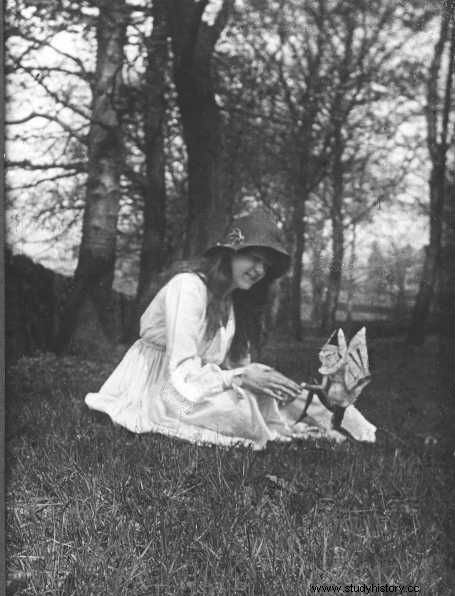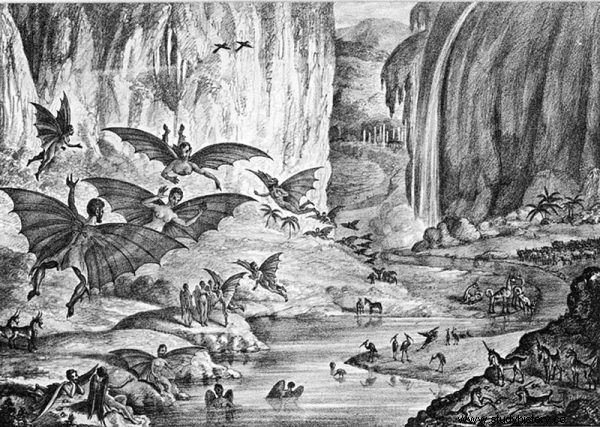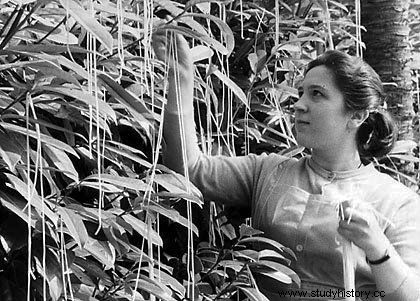Everyone knows this:the media should not be trusted. Yet history is full of examples that people often forgot this old truth. And although you can forgive the terrified audience of the radio play "Wars of the Worlds", who believed in the Martians' attack on Earth in 1938, it is difficult to indulge people who thoughtlessly copied from Wikipedia the slogan about Henryk Batuta - a communist activist, one of the founders of the Patriots union Polish and ... a completely fictional character, whose anonymous group set up a password in an online encyclopedia.
Of course, there are occasions when you need to be especially vigilant - for example on April 1. For example, the Swedish media became famous for April Fools' jokes. In 1950, the Goteborgs Posten newspaper reported that the island of Öland had detached from the seabed and was drifting in the Baltic Sea. Effect? Terrified readers fearing the island strike the land. In turn, twelve years later, Sveriges Television announced that by wearing nylon stockings on the screen, the TV broadcast would be received in color. It sounds absurd, but many Swedes fell for this information and searched the mixes (and shops) to find matching tights to match TV sets.
Here are five stories in which the media - intentionally (or not) - mocked their audience…
Arthur Conan Doyle and the fairies
For example, where the press unknowingly contributed to the dissemination of false information. But what kind!

The Christmas issue of The Strand Magazine in 1920 went almost immediately. Reason? Article by Arthur Conan Doyle, in which he described the meeting of two inhabitants of the Cottingley village with ... fairies!
Photographs were to prove the existence of magical creatures. But all the fuss was older than the Christmas number. It all started in 1917, when two cousins - Elsie Wright and Frances Griffiths - took a photo of one of them with the fairies. When the case - thanks to the mother of one of the girls, who showed the pictures at the Theosophical Society - publicity, the pictures were properly investigated.
Experts, however, did not show that the photos would be a photomontage - but no one dared to admit that fairies exist. The author of Sherlock Holmes, who was fascinated by paranormal phenomena, became interested in the matter. He contacted Edward Gardner - the leader of the Theosophical Society. "Once we discover this, it will not be difficult for the world to accept a spiritual message that is backed up by the physical facts that have already been presented to it," Doyle exclaimed. Only after several decades the truth came to light - the protagonists of the scandal confirmed that the fairies in the photo were indeed, but… cut out of paper!
Fantastic Beasts… on the moon
In the story of the Cottingley fairies, the press appears as a heroine spreading information that does not necessarily mislead readers on purpose. However, journalistic ducks already lived on the pages of newspapers, and one of the first of them was the one published in 1835 in The New York Sun.
The editor-in-chief of the newspaper, Richard Adams Locke, then published a series of reports that allegedly were popular scientific reprints of texts by the famous astronomer John Herschel. Materials for the editorial office of "The New York Sun" were to be brought by a certain Dr. Andrew Grant - Herschel's assistant during a trip to Africa, who participated in the sky research at the Cape of Good Hope. To make the message even more credible, it was stated that the articles came from the scientific "Edinburgh Journal of Science".

Fantastic Beasts on the Moon
The texts (six of which were published in total) contained information about fairy-tale landscapes and fantastic animals that were to inhabit the moon. Among the creatures he observed, Herschel was to see, among others, Vespertilio homo - the bat-people . Herschel's amazing astronomical discoveries, published in The New York Sun, reprinted newspapers across the country, delighting readers hungry for scientific news.
The whole hoax began to waver when two professors could not find articles in a scientific journal and asked the editorial office to make them available. Then the truth came out - the author of the texts was not Herschel, but Richard Adams Locke. Interestingly, after revealing the truth, the famous astronomer did not take offense at the newspaper, on the contrary - he decided that the articles published in The New York Sun were more interesting than his own research. And the whole hoax definitely paid off for the publisher - and even after it was released, it was still hugely popular.
Polish Loch Ness Monster
Another example comes from the Polish backyard. In the early eighties of the twentieth century, the country was informed that the waters of the Zegrze Reservoir were to swim Paskuda - the Polish equivalent of the Loch Ness monster that fed on the wastewater from the reservoir. The story about her was spread by journalists of the popular "Summer with the radio", and Paskuda's father was to be the journalist Wojciech Mazurkiewicz. For the purposes of the legend of Paskuda, he invented a number of stories - he told, among others, about how the Japanese directors were planning to make the movie "Paskuda versus Godzilla" or that the Americans are planning to buy Paskuda for the California oceanarium. Especially the latter information caused a wave of opposition among the listeners - Paskuda belongs to Poland, we will not give her back to America! Unfortunately, along with the sewage in the brine, the legend of Paskudzie died. Today it is remembered only by the inhabitants of Zegrze and its vicinity.
Spaghetti grows in trees
It was supposed to be an innocent April Fool's joke - meanwhile, even the then director of the BBC, Sir Ian Jacob, believed in this hoax. On April 1, 1957, the British could watch a short, only 3-minute document, devoted to the Swiss town of Ticino, which was to become famous for its spaghetti cultivation . Reporter Richard Dimbleby spoke passionately about the hardships of pasta cultivation:especially sensitive in March, when frosts may affect the crops or the pest - the spaghetti weevil, which (fortunately!) Did not destroy the harvest this year.

The innocent joke quickly turned into a national stir. In the idz wanted to know if you could grow your own spaghetti tree - to which journalists replied that the best way to do it was to put a sprig of spaghetti in a can of tomato sauce. Soon, however, the authors of the joke - terrified of the number of people who believed the joke - admitted that it was just a joke and apologized to all those who felt offended by it in any way.
Was Lenin a mushroom?
On May 17, 1991, the "Fifth Wheel" program was broadcast on Leningrad Television, one of which was the series "Sensations and Hypotheses". On that day, the avant-garde artist Sergei Kuriochin, who claims to be a historian, gave an interview. He convinced everyone that behind the outbreak of the October Revolution in Russia was Lenin's addiction to psilocybin mushrooms and over time - as a result of their abuse - the very leader of the revolution was to become a mushroom . To make his thesis credible, the alleged historian referred to the results of fictitious studies that he himself, Carlos Castaneda (American anthropologist), Konstantin Eduardowicz Ciołkowski (pioneer of cosmonautics) and American scientists from MIT were to carry out.
Viewers were not used to this type of vision jokes. So they accused the Committee of the Communist Party of the Soviet Union with letters, and terrified by the wave of inquiries, the members of the Committee decided to issue a statement in which they firmly denied the absurd reports.
Today, this hoax is considered a breakthrough in the history of television and a turning point in the relaxation of television censorship in the USSR countries . On the other hand - not only the inhabitants of post-Soviet countries could not believe the jokes about Lenin. In 1995, the Irish daily, the Irish Times, wrote that Disney was negotiating with the Russian government to buy Lenin's embalmed corpse to place it in a Disneyland mausoleum.
Bibliography and references:
- 1957:BBC fools the nation [accessed:20/10/2019]
- Czernich Paweł, "Spaghetti grows on trees". The story of the first TV fake news [access:October 21, 2019].
- Doyle Arthur Conan, Coming of the fairies, ed. George H. Doran Co, New York 1922
- BBC:Spaghetti-Harvest in Ticino, [accessed:20/10/2019]
- Boese Alex, Fake news and other forgeries from the Middle Ages to the 21st century, ed. Amber, Warsaw 2018;
- Service Robert, Lenin:A Biography, Macmillan London 1997;
- Great network. E-seje from the sociology of the Internet, ed. J. Kurczewski, publ. TRIO, Warsaw 2006
